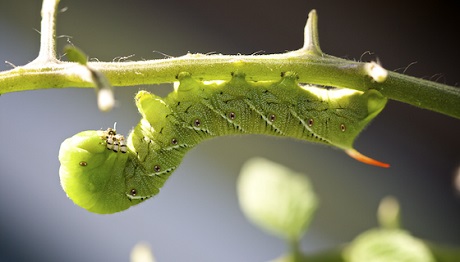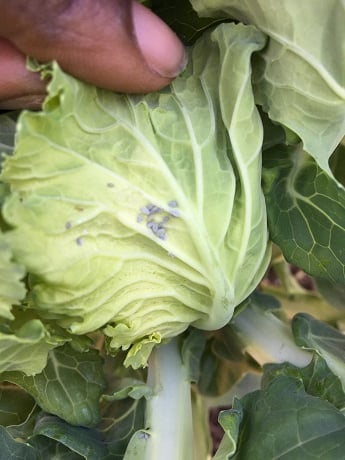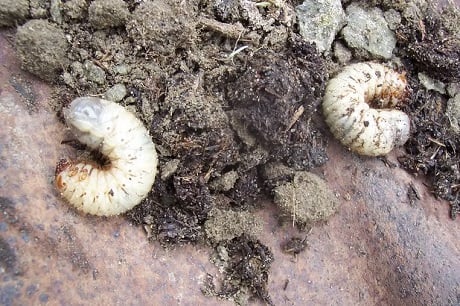6 Steps to Rid Your Garden of Bad Bugs
Take a deep breath because it is time to dive into the creepy, crawly world of bugs. If you’re squeamish, we are sorry to tell you that bugs are a part of gardening. A common misconception is any bug found in your garden is harmful to your plants. That’s just not true! Most bugs are harmless, even helpful, to your garden.
However, there are some bugs that prey on crops and will destroy your plants. To help give your garden the best chance of survival, it is necessary to implement some form of pest control to keep plants safe from pests.
The question becomes, “Which bugs are good and which bugs are bad for my garden?” Luckily, we have expert help from St. Vincent de Paul’s Urban Farm Program Coordinator Nika Forte. “Most of the bugs found in your garden are harmless,” explains Nika. “When people find bugs on their plants, they tend to panic—but there is no need to.”
In this month’s ‘Dig It’ episode, Nika identifies which bugs are bad and shares 6 tips to eliminate them from your garden.
Bad Bugs 101
Wondering which bad bugs are most common in Arizona? We have a list!
Hornworms or Hornworm Caterpillars

Hornworms are most commonly found on tomatoes, peppers, eggplants and leafy greens. “This bug gives a whole new perspective on the book, The Very Hungry Caterpillar,” says Nika. “Hornworms are very good hiders and will decimate a whole tomato plant within a matter of days.” These bugs can be found on the bottom of a leaf or blending in with your plant’s stems.
Aphids

Aphids are usually found on cabbage, potatoes and eggplants. They emerge in April and begin feeding on perennial weeds. By May and June, aphids will move on to your plants. To find these bugs, look for clusters on the underside of your plant’s leaves. “It is important to note that these bugs are especially dangerous because they can bring diseases to your plants,” Nika says. These diseases included Tulip Breaking virus, which causes color-breaking in tulip flowers, Potato Leafroll virus and Potato virus Y, which limits a potato plant’s production.
Squash Bugs
Squash Bugs are found on squash, pumpkin, zucchini, cucumber, watermelon and cantaloupe. “These bugs have become an increasingly big problem for farmers and gardeners in the West,” explains Nika. These pests will transmit Cucurbit Yellow Vine disease which causes a plant’s vines and leaves to turn yellow, wilt and die–killing the plant in the process.
Garden Grub

Garden Grub is the immature form of Scarab Beetles. These bugs feed on and destroy grass and vegetable roots. “Grub bugs are usually found one to two inches below your soil,” says Nika. “You won’t notice the damage immediately, and by the time you do, it is often too late to save the plant.” Her best advice is to carefully check around the base of your plant every few weeks to make sure these bugs aren’t harming your plant.
6 Ways to Combat Bad Bugs
1. Bacillus Thuringiensis Spray (BT Spray)
BT Spray is an all-natural spray which can be found at any Home Depot, Lowes or local nursery. BT spray is used to fight off Hornworms. The spray should be applied to plants around dusk and NEVER during peak hours of sunlight.
2. Neem Oil
Neem Oil is an organic Hornworm pest control product. The oil is pressed from the fruits and seeds of the neem tree and is a very effective pest control method. Just mix the Neem Oil concentrate with water and spray on both sides of plant leaves. Presto! Plant pests are gone.
3. Diatomaceous Earth
Diatomaceous Earth is a fine powder that fights off Aphids and Squash bugs in your garden. Lightly and evenly dust the powder over the infested crops. The powder washes away easily so it is recommended not to water the area for 24 to 48 hours after application.
4. Fight Bad Bugs with Good Bugs
Introducing good bugs into your garden is another all-natural form of pest control. Good predator bugs hunt down harmful bugs and eliminate them from your crops. These good bugs include: Lady Bugs, Dragonflies and Praying Mantises. Fun fact: Lady Bugs and Praying Mantises can be purchased at your local garden store; Dragonflies will find their way into your garden naturally.
5. Chickens
If you own chickens, it’s time to put them to work! Allowing chickens to roam in your garden is a great way to fight pests. Chickens act as ‘pest police’ and snack on unwanted bugs. Depending on the size of your garden, using chickens as your main form of pest control might not work. For large spaces, use a few different methods to ensure proper pest control.
6. Bug-Repelling Plants
Add to the beauty of your garden while also repelling pests. Flowers like Marigolds will keep mosquitos and aphids at bay. Calendulas deter beetles and hornworms from entering your backyard. Some other plants that help with pest control include: Petunias, Basil, Lavender, Rosemary, Mint, Chrysanthemums and Lemongrass.
Urban farming and food production is an increasingly important part of life. Give gardening a try and remember that regardless of what pest control method you use, it’s important to have fun! Happy gardening!



